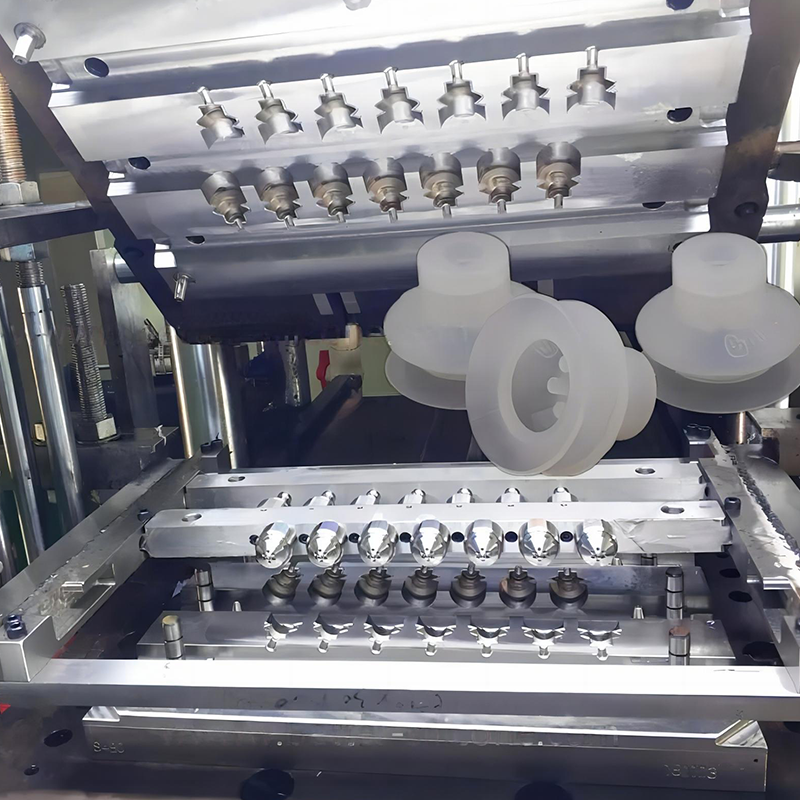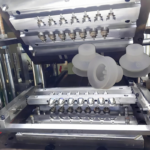Compression Moulding Process for Rubber Bellows
Compression moulding is one of the oldest and most reliable methods for manufacturing rubber products. This process involves pressing uncured rubber between heated mold plates within a hydraulic press. The rubber material, initially formed to match the desired final product shape and size, is placed into the mold. Under the influence of heat and pressure, the rubber conforms to the shape of the mold cavity. Vulcanization occurs over a set period, resulting in the finished product, which is then removed from the mold, allowing the cycle to repeat. The entire process, from preparing the rubber material to placing it on the mold and removing the finished parts, is typically done manually.
Types of Rubber Compression Molds
Two-Plate Rubber Compression Mold
This is the most common and straightforward type of compression mold. It consists of a top and a middle plate.
Ideal for producing large rubber parts and those with simple structures.
Common applications include rubber seal rings, rubber plates, rubber washers, and various rubber gaskets.
Materials for Rubber Bellows in Compression Molding
- EPDM Rubber Bellows
Known for excellent weather resistance, ozone resistance, electrical insulation, abrasion resistance, and tear resistance.
Operating temperature range: -45°C to 150°C.
- Silicone Bellows & VMQ Bellows
Exhibit outstanding weather resistance and resistance to acids and alkalis.
Food-grade quality with a broad operating temperature range of -40°C to 230°C.
- Fluoro-Silicone Rubber & FVMQ Expansion Bellows
Noted for their mechanical strength and resistance to organic solvents and petroleum-based fluids.
- Neoprene (Chloroprene) Rubber Expansion Bellows
Offers good weather resistance (just behind EPDM) and oil resistance (second only to Nitrile Rubber).
- Viton & Fluoro-Rubber Bellows and Boots
Combines excellent weather and oil resistance with high heat resistance, capable of withstanding temperatures up to 200°C.
Key Features and Benefits
Durability: Manufactured to withstand harsh environments, ensuring longevity and reliability.
Customizability: Tailored to meet specific requirements and applications.
Versatility: Suitable for a wide range of industrial applications due to varied material options.
Applications
Automotive Industry: Used in seals, gaskets, and bellows to protect parts from environmental exposure.
Electronics: Provides insulation and protection for electronic components.
Industrial Equipment: Serves as protective covers and flexible joints in machinery.


